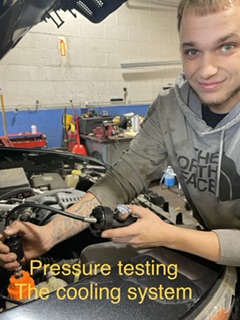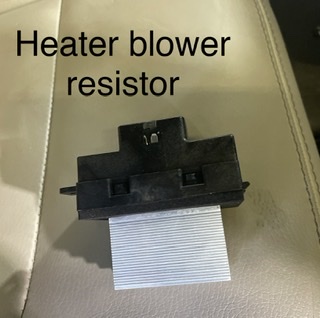Posted on 11/30/2022

Can a car run with a bad Radiator? The answer is, unfortunately, no. If your Radiator is leaking Coolant, it's likely not going to be able to properly cool your Engine, which can lead to all sorts of problems. The Radiator is one of the most vital component of your car's Cooling System, and its main purpose is to keep the Engine from overheating. It does this by circulating coolant through the Engine and carrying away the heat from the engine block. However, radiators can go bad for a number of reasons. Here are some of the most common culprits. 1. Lack of Regular Maintenance - Just like any other part of your car, the Radiator needs to be regularly maintained in order to function properly. This means Flushing out the old Coolant and refilling it with fresh coolant at least once a year. If you don't do this, the coolant can become stagnant and start to corrode the radiator from the inside out. 2. Leaks - Radiators can develop leaks over time, and these leaks ... read more
Posted on 11/23/2022

All About the Heater Blower Motor Resistor When it comes to your car, there are a lot of intricate parts that work together to keep everything running smoothly. One part you might not have heard of is the Heater Blower Motor Resistor. In this blog post, we'll explore what a heater blower motor resistor is and what it does. We'll also touch on some common signs that your heater blower motor resistor might need to be replaced. Read on to learn more! What is a Heater Blower Motor Resistor? The heater blower motor resistor is a component in your car's HVAC system. Its primary function is to regulate the flow of Electrical current to the Heater Blower Motor. The amount of electrical current that flows to the heater blower motor affects how fast the blower motor spins. That, in turn, determines how much air flows through the Vents into the cabin of your car. In short, the heater blower motor resistor is responsible for regulating the speed of the blower motor, whic ... read more
Posted on 11/17/2022

A car's Engine is a complex piece of machinery, made up of many different parts that all have to work together in order for the Engine to run properly. The Timing Cover Gasket is one such part, and it plays an important role in keeping the engine oil where it belongs—inside the Engine. What Does a Timing Gasket do? Before we get into the nitty-gritty of Timing Cover Gasket failures, let's first take a step back and explain what a timing cover gasket actually is. The timing cover is located on the front of the engine and covers the timing belt or chain (hence the name). The timing cover gasket is what seals the gap between the timing cover and the engine block, thus keeping oil from leaking out. How do I Know if my Timing Cover Gasket Needs to be Replaced? There are a few signs that you may need to replace your timing cover gasket: * You notice an Oil Leak or Coolant Leak coming from your engine * Your Check Engine Light is on * Your car's engine is running hot ... read more
Posted on 11/16/2022

I know this has nothing to do with Auto Repair, but cooking is a terrific way to relax and just have some fun. As you can see from the pictures, we did not Spatchcock the Turkey and it took FOREVER. This is such an easy step. Our Turkey turned out wonderful. I think it would be better Spatchcock. Spatchcock is a technique where you remove the backbone of the turkey so it can lay flat while cooking. This allows for even cooking and crisper skin. What do you think?The Ultimate Guide to Smoking a Spatchcock TurkeyThanksgiving is just around the corner, which means it's time to start thinking about how you're going to cook your turkey. If you're looking for something a little different this year, why not try smoking a spatchcock turkey? Spatchcocking is a method of preparation that involves removing the turkey's backbone so that it can be flattened out before cooking ... read more
Posted on 11/9/2022

What Does it Mean When You See Corrosion on the Positive Terminal of Your Battery? Have you ever noticed corrosion on the Positive Terminal of your Battery and wondered what it meant? The substance can be either greenish blue or white, depending on the type of metal of the terminal ends. If the substance is greenish blue, its copper sulfate. The copper from the terminal clamp reacts with the lead in the battery. If the clamps are aluminum, it’ll be whiter in color, creating aluminum sulfate. In either case, you may notice the battery quality start to degrade. What Causes Corrosion on Battery Terminals? There are a few things that can cause Corrosion on Battery Terminals: - Overcharging: When you see corrosion on the Positive Terminal, this means the Battery may be overcharging. - Vibration: Automotive batteries are designed to withstand vibration, but too much vibration can still cause damage. - Environmental factors: Batteries are also susceptible to damage f ... read more